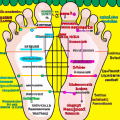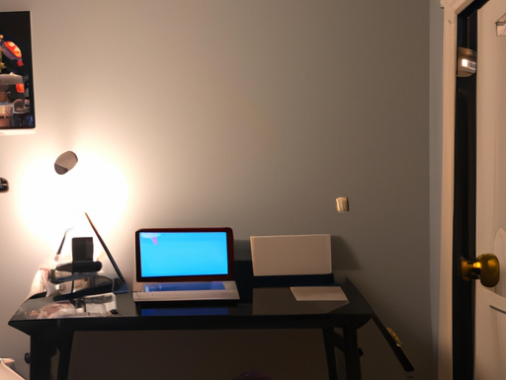-
Table of Contents
- Introduction
- How Foot Reflexology Can Help Relieve Stress and Anxiety
- What to Expect During a Foot Reflexology Session
- Common Side Effects of Foot Reflexology
- How to Prepare for a Foot Reflexology Session
- How to Find a Qualified Foot Reflexology Practitioner
- The Benefits of Foot Reflexology for Pain Relief
- How to Incorporate Foot Reflexology into Your Self-Care Routine
- Q&A
- Conclusion
Introduction
Foot reflexology is a type of massage therapy that involves applying pressure to specific points on the feet. It is believed to help promote relaxation and improve circulation. While it is generally considered to be safe, there are some potential side effects that should be taken into consideration. This article will discuss the potential side effects of foot reflexology and how to minimize them.
How Foot Reflexology Can Help Relieve Stress and Anxiety
Stress and anxiety are common issues that many people face in their daily lives. Fortunately, there are a variety of treatments available to help manage these conditions. One such treatment is foot reflexology, which is a form of massage therapy that focuses on specific points on the feet that correspond to different areas of the body.
Foot reflexology is based on the idea that the feet are a map of the body. By applying pressure to certain points on the feet, reflexologists can help to stimulate the body’s natural healing processes. This can help to reduce stress and anxiety by promoting relaxation and improving circulation.
Studies have shown that foot reflexology can be effective in reducing stress and anxiety. One study found that after just one session of foot reflexology, participants reported feeling more relaxed and less anxious. Other studies have found that regular sessions of foot reflexology can help to reduce stress and anxiety levels over time.
Foot reflexology can also help to improve sleep quality. Poor sleep is often a symptom of stress and anxiety, and reflexology can help to promote relaxation and improve sleep quality.
In addition to reducing stress and anxiety, foot reflexology can also help to reduce pain and improve overall health. Reflexology can help to stimulate the body’s natural healing processes, which can help to reduce pain and improve overall health.
Overall, foot reflexology is a safe and effective treatment for reducing stress and anxiety. It can also help to improve sleep quality and reduce pain. If you are looking for a natural way to manage stress and anxiety, foot reflexology may be a good option for you.
What to Expect During a Foot Reflexology Session
A foot reflexology session is a type of massage therapy that focuses on applying pressure to specific points on the feet. It is based on the belief that these points correspond to different organs and systems in the body. During a session, a reflexologist will use their hands, thumbs, and fingers to apply pressure to the feet.
At the beginning of the session, the reflexologist will ask about any health concerns or medical conditions that may affect the session. They may also ask about any medications that are being taken. This information is important for the reflexologist to know in order to provide the best possible treatment.
The reflexologist will then begin to massage the feet. They will use their hands, thumbs, and fingers to apply pressure to specific points on the feet. This pressure is meant to stimulate the body’s natural healing process. The reflexologist may also use massage techniques such as kneading, rubbing, and tapping.
The session may last anywhere from 30 minutes to an hour. During this time, the reflexologist will work on both feet. They may also use hot or cold compresses to help relax the muscles and reduce tension.
At the end of the session, the reflexologist may provide advice on how to maintain good foot health. They may also suggest lifestyle changes that can help improve overall health.
A foot reflexology session can be a relaxing and therapeutic experience. It is important to remember that reflexology is not a substitute for medical care. If you have any health concerns, it is important to speak to your doctor before beginning any type of treatment.
Common Side Effects of Foot Reflexology
Foot reflexology is a type of massage therapy that involves applying pressure to specific points on the feet. It is believed to be beneficial for a variety of conditions, including stress, anxiety, and pain. While reflexology is generally considered safe, there are some potential side effects that may occur.
Common side effects of foot reflexology include:
• Soreness: After a reflexology session, some people may experience soreness in the feet or other areas of the body that were worked on. This is usually temporary and should resolve within a few days.
• Bruising: Pressure applied during a reflexology session may cause bruising in some areas. This is usually mild and should resolve within a few days.
• Nausea: Some people may experience nausea after a reflexology session. This is usually mild and should resolve within a few hours.
• Headache: Some people may experience a headache after a reflexology session. This is usually mild and should resolve within a few hours.
• Dizziness: Some people may experience dizziness after a reflexology session. This is usually mild and should resolve within a few hours.
It is important to note that these side effects are generally mild and should resolve within a few days. If any of these side effects persist or worsen, it is important to contact a healthcare professional.
How to Prepare for a Foot Reflexology Session
A foot reflexology session is a therapeutic massage technique that focuses on specific pressure points in the feet to promote relaxation and healing throughout the body. Preparing for a foot reflexology session can help ensure that you get the most out of the experience.
Before the Session
Before your session, it is important to make sure that your feet are clean and free of any dirt or debris. You should also trim your toenails and remove any calluses or dry skin. Additionally, it is important to wear comfortable clothing that allows easy access to your feet.
During the Session
During the session, it is important to communicate with your reflexologist. Let them know if you are experiencing any pain or discomfort, as well as any areas that you would like them to focus on. Additionally, it is important to relax and take deep breaths throughout the session.
After the Session
After the session, it is important to drink plenty of water to help flush out any toxins that may have been released during the massage. Additionally, it is important to avoid strenuous activity for the rest of the day and to take time to relax and reflect on the experience.
By following these steps, you can ensure that you get the most out of your foot reflexology session.
How to Find a Qualified Foot Reflexology Practitioner
Finding a qualified foot reflexology practitioner can be a daunting task. It is important to ensure that the practitioner you choose is properly trained and certified in the practice of reflexology. Here are some tips to help you find a qualified practitioner:
1. Ask for referrals. Ask friends, family, and colleagues if they have had a positive experience with a reflexology practitioner.
2. Research practitioners online. Look for practitioners who are certified by a reputable organization, such as the American Reflexology Certification Board (ARCB).
3. Check credentials. Make sure the practitioner is licensed and insured.
4. Ask questions. Ask the practitioner about their experience and training.
5. Read reviews. Look for reviews from past clients to get an idea of the practitioner’s reputation.
6. Schedule a consultation. Schedule a consultation with the practitioner to discuss your needs and expectations.
By following these tips, you can be sure to find a qualified foot reflexology practitioner who can provide you with the best possible care.
The Benefits of Foot Reflexology for Pain Relief
Foot reflexology is an ancient healing practice that has been used for centuries to provide relief from pain and other ailments. It is based on the belief that certain areas of the feet correspond to different organs and systems in the body. By applying pressure to these areas, reflexologists can help to reduce pain and improve overall health.
The practice of foot reflexology involves applying pressure to specific points on the feet. These points are believed to correspond to different organs and systems in the body. By applying pressure to these points, reflexologists can help to reduce pain and improve overall health.
One of the main benefits of foot reflexology is its ability to provide relief from pain. Studies have shown that reflexology can help to reduce pain in the lower back, neck, and shoulders. It can also help to reduce headaches, migraines, and other types of chronic pain. Additionally, reflexology can help to reduce stress and anxiety, which can also contribute to pain relief.
Foot reflexology can also help to improve circulation and reduce inflammation. By stimulating the reflex points on the feet, reflexologists can help to improve blood flow and reduce inflammation in the body. This can help to reduce pain and improve overall health.
Finally, foot reflexology can help to improve overall health and wellbeing. By stimulating the reflex points on the feet, reflexologists can help to improve the body’s natural healing process. This can help to reduce pain and improve overall health.
In conclusion, foot reflexology is an ancient healing practice that has been used for centuries to provide relief from pain and other ailments. It can help to reduce pain, improve circulation, reduce inflammation, and improve overall health and wellbeing. For these reasons, foot reflexology is an effective and natural way to reduce pain and improve overall health.
How to Incorporate Foot Reflexology into Your Self-Care Routine
Foot reflexology is an ancient healing practice that has been used for centuries to promote relaxation and wellbeing. It is based on the idea that certain areas of the feet correspond to different organs and systems in the body. By applying pressure to these areas, reflexology can help to reduce stress, improve circulation, and promote overall health. Incorporating foot reflexology into your self-care routine can be a great way to relax and take care of your body.
The first step in incorporating foot reflexology into your self-care routine is to find a qualified reflexologist. Look for someone who is certified and experienced in the practice. You can also find reflexology charts online that can help you identify the different areas of the feet that correspond to different organs and systems in the body.
Once you have identified a qualified reflexologist, you can begin to incorporate foot reflexology into your self-care routine. Start by scheduling regular appointments with your reflexologist. During the appointment, your reflexologist will use their hands to apply pressure to specific areas of your feet. This pressure helps to stimulate the corresponding organs and systems in the body, promoting relaxation and wellbeing.
In addition to regular appointments with your reflexologist, you can also practice foot reflexology at home. Start by finding a comfortable place to sit or lie down. Then, use your hands to apply pressure to the different areas of your feet. You can use a reflexology chart to help you identify the areas that correspond to different organs and systems in the body.
Finally, make sure to take time to relax and enjoy the benefits of foot reflexology. Allow yourself to take deep breaths and focus on the sensations in your feet. This will help to further promote relaxation and wellbeing.
By incorporating foot reflexology into your self-care routine, you can enjoy the many benefits of this ancient healing practice. Regular appointments with a qualified reflexologist, as well as practicing foot reflexology at home, can help to reduce stress, improve circulation, and promote overall health.
Q&A
1. What are the most common side effects of foot reflexology?
The most common side effects of foot reflexology are soreness, tenderness, and fatigue. Some people may also experience a feeling of lightheadedness or dizziness.
2. Are there any long-term side effects of foot reflexology?
No, there are no long-term side effects of foot reflexology. However, it is important to note that reflexology should not be used as a substitute for medical care.
3. Can foot reflexology cause any adverse reactions?
In rare cases, foot reflexology can cause adverse reactions such as skin irritation, bruising, or swelling. If any of these occur, it is important to stop the treatment and seek medical attention.
4. Is foot reflexology safe for pregnant women?
Yes, foot reflexology is generally considered safe for pregnant women. However, it is important to consult with a doctor before beginning any type of treatment.
5. Can foot reflexology cause any allergic reactions?
Yes, foot reflexology can cause allergic reactions in some people. If you experience any signs of an allergic reaction, such as hives, itching, or swelling, it is important to stop the treatment and seek medical attention.
6. Is foot reflexology painful?
No, foot reflexology is not usually painful. However, some people may experience some discomfort or soreness during the treatment.
7. Are there any risks associated with foot reflexology?
Yes, there are some risks associated with foot reflexology. These include skin irritation, bruising, swelling, and allergic reactions. It is important to consult with a doctor before beginning any type of treatment.
Conclusion
In conclusion, foot reflexology is a safe and natural therapy that can provide many benefits, including improved circulation, relaxation, and stress relief. However, it is important to note that there are some potential side effects, such as soreness, bruising, and tenderness in the feet. It is important to consult with a qualified reflexologist before beginning any reflexology treatment to ensure that it is safe and appropriate for you.




